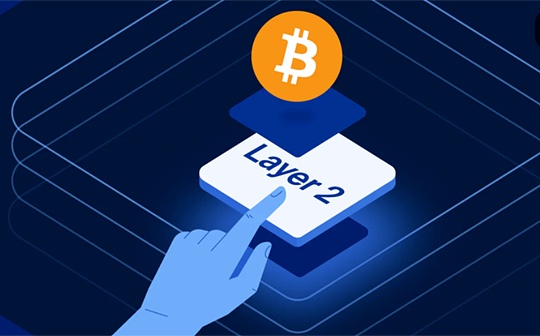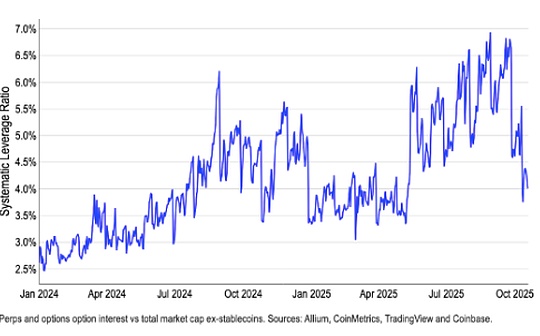
Author: NingNing Source: X, @0xNing0x
Does Bitcoin need an ecosystem?My answer is required.
But frankly speaking, in the priority ranking consensus of the Bitcoin community, compared with Bitcoin ETFs and Bitcoin strategic reserves, the construction of the Bitcoin ecosystem is an important but not urgent matter in this cycle.But for developers and VCs, the construction of the Bitcoin ecosystem is an important and urgent matter in this cycle. They urgently need to use new technical primitives such as BitVM and ZK and promote the reactivate of the Bitcoin main network OP-Cat opcode to solve the following two “Holy Grail-level” real problems:
– How Bitcoin regains its crypto narrative sovereignty after the “Samoto Vision” is disciplined by “Digital Gold”;
– How to maintain Bitcoin consensus budget level after the Bitcoin block reward is halved again;
In the fierce competition between the Bitcoin ecological project for the above two “Holy Grail-level” real-life problem solutions, three major projects such as Nubit, Babylon, and Bitlayer emerged, and each claimed that they could bring redemption to Bitcoin.
Nubit, Nakamoto Time miners, Bitcoin Whale, and BRC20 Domo, jointly initiated the solution to the Bitcoin expansion problem through soft forks; Babylon resells Bitcoin’s economic security under the banner of Bitcoin ReStaking; Bitlayer is keen on introducing the prosperity of EVM into the Bitcoin ecosystem.
On the surface, these three projects are all designed to solve the problems of Bitcoin expansion and programmability, but after an in-depth analysis, you will find that their technical paths, security mechanisms and attitudes towards Bitcoin fundamentalism are completely different.This is not only a dispute over technology, but also a dispute over Bitcoin philosophy.
1. Native vs. Borrowing power: Three completely different technical paths
Nubit chose the purely native Bitcoin route, and Bitcoin Thunderbolt (Bitcoin Thunderbolt) jointly launched with OG miners, Bitcoin giant whale and BRC20 Domo, was officially launched on April 15.Bitcoin Thunderbolt was rated by HSBC in official news as “the most landmark technology upgrade for Bitcoin in the past decade.”Bitcoin Thunderbolt introduces OP_CAT opcode through soft fork and implements UTXO Bundling, improving the throughput capability of Bitcoin’s main chain without sacrificing decentralization.
By contrast, Babylon and Bitlayer chose the “curve-saving the country”.Relying on the Cosmos ecosystem, Babylon has built a cross-chain staking system, allowing BTC holders to lock their assets and participate in the PoS consensus.Bitlayer simply chose to port Ethereum’s EVM, focusing on providing a familiar Solidity development environment for the Bitcoin ecosystem.
These three paths reflect different philosophical views: Nubit adheres to “Bitcoin Maximumism” and believes that all expansion should happen on the Bitcoin main chain; Babylon adopts a compromise route, trying to integrate Bitcoin with the Cosmos ecosystem; Bitlayer fully embraces the Ethereum paradigm, hoping to replicate the successful experience of Ethereum.
2. Security and decentralization: Who is closer to Satoshi’s vision?
From a security perspective, Nubit relies on the PoW consensus of the Bitcoin main network, and transactions are verified on the chain without relying on external trusted third parties, which allows it to inherit the security features of Bitcoin.The Nubit team has published 5 papers on OP_CAT and UTXO Bundling at top academic conferences such as S&P, Crypto, and USENIX. The security of the Nubit extension solution has been recognized by the academic community.
Babylon adopts a security model of hybrid PoS + BTC timestamps. Because the introduction of BTC staking and Restaking mechanisms enhance economic security and BTC timestamps prevent long-range attacks, the Babylon Genesis main network has achieved security far beyond other PoS chains at the beginning of its birth.However, due to the lack of quantifiable standards to measure the incremental value of economic security to blockchain networks, in the Solana governance dispute, the idea that some people in the crypto community raised “economic security is a meme” has received a lot of support.In fact, in the practice of EigenLayer, the economic security of AVS resale is only used in application scenarios such as oracle network, (data availability) DA, cross-chain bridge Relayer, and is not used to ensure the security of bulk chain assets.It is highly likely that Babylon’s BNS will replicate the development path of EigenLayer AVS.
Bitlayer’s security model is more centralized, relying on alliance multi-signal + PoS mechanism, and has not yet truly accessed the BTC main network security.What is more worthy of attention is that 97% of its BTC form is centralized WBTC and relies heavily on third-party custodians, which is far from the core concept of Bitcoin’s “trustlessness and self-sovereignty”.
3. Asset form and ecological compatibility: Who can truly serve Bitcoin users?
In terms of asset compatibility, the three projects also showed significant differences.Nubit supports direct transactions of native Bitcoin assets such as BRC20 inscriptions and runes, without cross-chain or encapsulation.This means that users holding these assets can seamlessly participate in the Nubit ecosystem without having to bear cross-chain risks.
In contrast, neither Babylon nor Bitlayer supports native assets in the Bitcoin network.When using these two platforms, users must first bridge or encapsulate BTC before using it, which not only increases operational complexity, but also introduces additional cross-chain risks.
For example, if you hold BRC20 tokens or rune assets, you can use them directly on Nubit; while on Babylon or Bitlayer, you may not be able to use these assets at all, or you need to go through a complicated bridging process – it’s like you have Alipay and WeChat, but go to a restaurant run by a Hong Kong local who only accepts Visa cards and Octopus payments.
4. Community governance and transparency: decentralization or capital control?
The community governance model also reflects the project’s core values.Nubit adopts an open source and transparent approach, and the evolution of the protocol is driven by multiple parties and is not owned by a single entity.Its Boosting Code fair distribution mechanism is open and transparent, and all participants are treated equally.There have been many ecological projects and mining pools (such as Mining Squared Pool) access testing, and the co-construction attributes are clear.
Babylon’s governance weight is relatively concentrated and capital has an advantage.The closed development path and opaque off-chain logic, coupled with a high threshold for community entry, make it more like a VC-led project than a truly community-driven protocol.
As for Bitlayer, its alliance governance structure and limited community engagement, as well as undisclosed multi-signature bridges and opaque asset flows, all raise questions about its degree of decentralization.The project seems to focus more on replicating the EVM ecosystem than truly serving the Bitcoin user community.
5. Development trajectory and future prospects
Judging from the current development trajectory, Nubit, with OG miners, Bitcoin Whale, and Domo, jointly promoted Bitcoin Thunderbolt, which emphasizes the native solution to the expansion problem on the Bitcoin main chain, which is highly consistent with Satoshi Nakamoto’s vision.
Babylon is more of a VC-led project, and there have been doubts about its profit-oriented approach in the community, especially on issues such as Idle TVL and large-scale divestment after airdrops.Although its cross-chain staking model is innovative, its native integration with Bitcoin is limited.
Bitlayer is more like trying to use the popularity of BTC to do EVM projects. Its community is mainly composed of “Hair-Booss Party”, which is far from the fundamentalist narrative of Bitcoin.While its EVM compatibility may appeal to Ethereum developers, the actual contribution of this approach to the Bitcoin ecosystem remains to be proved.
Conclusion: The crossroads of the evolution of Bitcoin technology
Standing at the crossroads of Bitcoin technology evolution, we see three completely different paths: Nubit represents native expansion and the persistence of Bitcoin values; Babylon reflects the pursuit of cross-chain integration and capital efficiency; Bitlayer demonstrates the pragmatic choice of copying the successful model.
For professional crypto investors, this is not only a technical choice, but also a choice of values.Do you believe that Bitcoin should stick to its fundamentalism, or do you believe that cross-chain integration is the future?Is it pursuing native security, or is it willing to accept a compromise route in exchange for more features?
The sage values the cause, while the mortals value the result.Different choices will produce different results.We must be very cautious and ensure that we are on the side of justice in crypto history.








